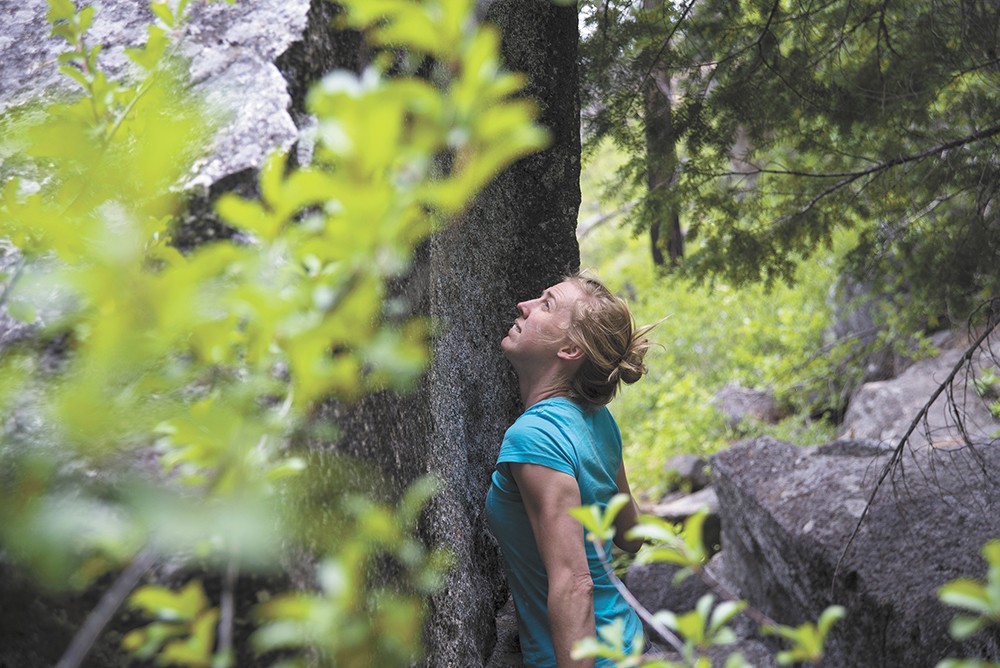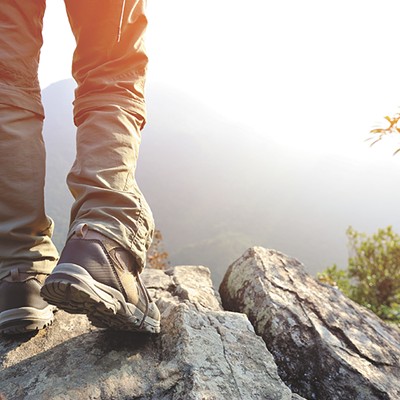In rock climbing, the basics are vital. Between the adrenaline, the landscape and the community, it's an incredible sport. But climbing in any form is dangerous, because there are so many opportunities for something to go wrong. Luckily, bold climbers spent decades figuring out ways to safely reach the top of some of the most inspiring and formidable walls, making the experience accessible to the masses.
Historically, people learned to rock-climb outside with a mentor. As climbing gyms became more prevalent in the U.S., they've stepped in as a testing ground for a lot of beginners. At Wild Walls in downtown Spokane (202 W. Second; wildwalls.com), new climbers have a chance to learn from an instructor in a controlled environment, says Dane Harrod, an employee and avid sport climber.
"We do everything we can to make it foolproof," Harrod says. "I think a good way to get your foundation is in the indoor scene."
The Wild Walls Vertical Introduction class teaches basic knots, commands, and belaying technique. They'll get you started top-roping, which is what it's called when the rope is set through an anchor at the top of the climb — a style that can be replicated outside. This is where you learn the most fundamental lesson of climbing: Trust your gear. It's designed to protect something much, much bigger and heavier than you.
Be warned — if you do it right, top-roping at a climbing gym will not be enough. Bouldering, sport climbing and traditional climbing are the big three styles that provide endless entertainment and challenge. You can do the first two in a climbing gym — the third is outdoors-only. The Northwest is home to world-class climbing in each category:
• Bouldering: Climbing short "problems" without a rope. Requires pads.
• Sport: The climber clips the rope to carabiners hanging from bolts in the wall, setting protection as they climb.
• Traditional: Using an array of expensive hardware, the climber places protection in natural cracks in the rock as they climb.
Every new style of climbing requires more instruction. If you can afford it, getting lessons from experts at the gym is a good way to learn. Instructors at Wild Walls can teach you how to sport-climb and set anchors, among other required skills. When you take your newfound zeal outside, you'll learn the second fundamental lesson of climbing: Stay humble. Variables including weather, rock quality, technical difficulty and protection come into play.
To figure out where to climb in Spokane, FalconGuides' book is adequate, though newly developed areas aren't included. Mountainproject.com is a useful online encyclopedia of climbing routes that includes the region. But nothing beats getting to know the local climbing community, which tends to work out at Wild Walls, and picking their brains for the most beginner-friendly places. A day pass at the gym will set you back about the same as a night out with friends — maybe less. ♦
THE COST OF CLIMBING
Rock climbing shoes: Available for rent at a climbing gym or $50-$60 for a basic pair
Harness: Available for rent or $55-$60
Chalk & chalk bag for sweaty hands: About $20
Helmet for climbing outside: $55-$60
Rope: Varies widely, but expect to pay $150 or more





















